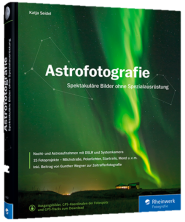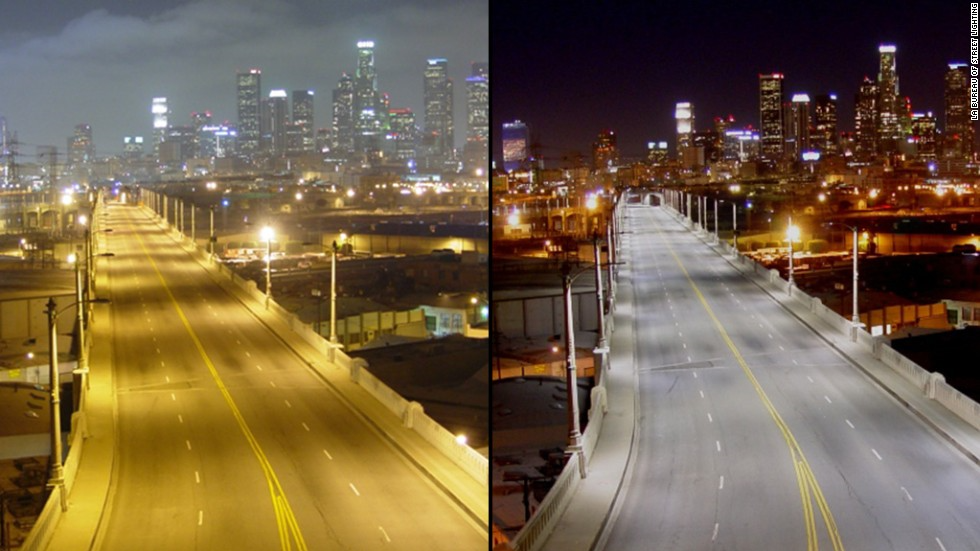Bildquelle: CNN
Die Amerikanische Ärztevereinigung (AMA) warnt vor dem Einsatz von blau-haltigem Licht in der Außenbeleuchung
- Die AMA unterstützt die sachgereachte Umwandlung in eine LED- basierende Allgemeinbeleuchtung , die den Energieverbrauch senkt und den Einsatz fossiler Brennstoffe
verringert.
- Die AMA fördert die Minimierung und die Kontrolle der blau-haltigen Umweltbeleuchtung durch die Verwendung von Licht mit so wenig blauen Lichtanteilen wie möglich. um Blendung zu
reduzieren.
- Die AMA fördert die Verwendung von Beleuchtung mit einer Farbtemperatur von 3000K oder weniger für Außenanlagen wie Fahrbahnen. Alle LED-Beleuchtungen sollte ordnungsgemäß abgeschirmt werden, um Blendung und schädliche Auswirkungen auf Mensch und Umwelt zu minimieren, und es sollte berücksichtigt werden, dass eine Leistungsregulierung der LED-Beleuchtung zu verkehrsarmen Zeiten durchgeführt werden kann.
LED-Straßenlaternen sollen gesundheits-schädlich sein
Der amerikanische Ärzteverband American Medical Association (AMA) warnt in einem Bericht vor den gesundheitschädlichen Folgen von LED-Straßenbeleuchtung in Städten. Durch die helle Leuchtkraft und den hohen Blauanteil im Laternenlicht würde der Tag-Nacht-Rhythmus der Stadtbewohner gestört. Das könne ernsthafte Gesundheitsschäden verursachen bis hin zu Krebs und Herz-Kreislauf-Erkrankungen. Darüber hinaus würde LED-Licht das Sehvermögen in der Nacht beeinträchtigen.
(mehr...)
Doctors issue warning about LED streetlights
The AMA's statement recommends that outdoor lighting at night, particularly street lighting, should have a color temperature of no greater than 3000 Kelvin (K). Color temperature (CT) is a measure of the spectral content of light from a source; how much blue, green, yellow and red there is in it. A higher CT rating generally means greater blue content, and the whiter the light appears. (more....)
AMA Adopts Community Guidance to Reduce the Harmful Human and Environmental Effects of High Intensity Street Lighting
For immediate release:
June 14, 2016
CHICAGO - Strong arguments exist for overhauling the lighting systems on U.S. roadways with light emitting diodes (LED), but conversions to improper LED technology can have adverse consequences. In response, physicians at the Annual Meeting of the American Medical Association (AMA) today adopted guidance for communities on selecting among LED lighting options to minimize potential harmful human and environmental effects.
Converting conventional street light to energy efficient LED lighting leads to cost and energy savings, and a lower reliance on fossil-based fuels. Approximately 10 percent of existing U.S. street lighting has been converted to solid state LED technology, with efforts underway to accelerate this conversion.
"Despite the energy efficiency benefits, some LED lights are harmful when used as street lighting," AMA Board Member Maya A. Babu, M.D., M.B.A. "The new AMA guidance encourages proper attention to optimal design and engineering features when converting to LED lighting that minimize detrimental health and environmental effects."
High-intensity LED lighting designs emit a large amount of blue light that appears white to the naked eye and create worse nighttime glare than conventional lighting. Discomfort and disability from intense, blue-rich LED lighting can decrease visual acuity and safety, resulting in concerns and creating a road hazard.
In addition to its impact on drivers, blue-rich LED streetlights operate at a wavelength that most adversely suppresses melatonin during night. It is estimated that white LED lamps have five times greater impact on circadian sleep rhythms than conventional street lamps. Recent large surveys found that brighter residential nighttime lighting is associated with reduced sleep times, dissatisfaction with sleep quality, excessive sleepiness, impaired daytime functioning and obesity.
The detrimental effects of high-intensity LED lighting are not limited to humans. Excessive outdoor lighting disrupts many species that need a dark environment. For instance, poorly designed LED lighting disorients some bird, insect, turtle and fish species, and U.S. national parks have adopted optimal lighting designs and practices that minimize the effects of light pollution on the environment.
Recognizing the detrimental effects of poorly-designed, high-intensity LED lighting, the AMA encourages communities to minimize and control blue-rich environmental lighting by using the lowest emission of blue light possible to reduce glare. The AMA recommends an intensity threshold for optimal LED lighting that minimizes blue-rich light. The AMA also recommends all LED lighting should be properly shielded to minimize glare and detrimental human health and environmental effects, and consideration should be given to utilize the ability of LED lighting to be dimmed for off-peak time periods.
The guidance adopted today by grassroots physicians who comprise the AMA's policy-making body strengthens the AMA's policy stand against light pollution and public awareness of the adverse health and environmental effects of pervasive nighttime lighting.
###
Media Contact:
AMA Media and Editorial
Pressroom: (312) 239-4991
Email: media@ama-assn.org
Quelle:
http://www.ama-assn.org/ama/pub/news/news/2016/2016-06-14-community-guidance-street-lighting.page
CSAPH Report 2-A-16:
REPORT OF THE COUNCIL ON SCIENCE AND PUBLIC HEALTH (CSAPH)
a16-csaph2.pdf
PDF-Dokument [235.7 KB]










